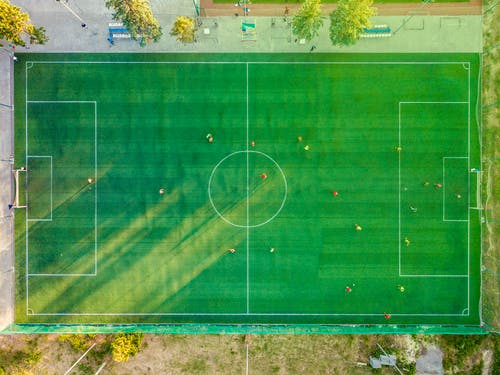Latest News
What is a Dynasty Fantasy Football League?

Dominating your fantasy football league is about strategizing and giving yourself every opportunity to learn. That’s why a lot of people will use fantasy football draft kits.
There are going to be differences in strategy, however, depending on whether you’re playing dynasty fantasy football.
The following is an overview of what to know about dynasty fantasy football and how it differs from a redraft league.
The Basics
Most people associate fantasy football with the redraft format. In a redraft format, you rely on single-season teams that are drafted right before the start of the NFL season. Then, when the season ends, they’re dismantled.
Many feel that a redraft format serves as a good introduction to fantasy, but then it’s not as challenging over time because you become more knowledgeable.
Having changes to scoring, rules, and roster sizes can add some interest to a typical league, but it doesn’t have the same level of complexity as a dynasty league, at least according to some people.
In a redraft league, rosters reset every season. Dynasty leagues are multi-year player ownerships. Roster sizes in a dynasty league tend to be larger and often have more than 30 players per team. This means that when you participate in a dynasty league, you have to understand the depth changes in a significant way and be on the lookout for sleepers.
Trading is also more important.
Dynasty leagues can spice up the sense of competition because winning and losing trades is a long-term result.
Keeper leagues limit the number of players you can carry from season to season, usually to either three or four players.
There’s no compensation to keep players in a dynasty league, and some keeper leagues require you to give up the equivalent round in the next redraft to keep a player. Rosters are kept throughout the season in a dynasty league.
Since you’re building a team over time, there’s a feeling of ownership.
If you make a mistake or have success in a dynasty league, it can affect the franchise for years, just like the actual NFL.
Dynasty vs. Keeper League
We touched on this a bit above, but there are similarities between a dynasty and a keeper league. In a keeper league, you can keep a few players. In a dynasty league, you’re keeping most or all of your players.
The Dynasty Off-Season
In redraft, when the NFL season ends, then a fantasy title is given, and you’re not speaking to the other members of your league until June. A dynasty league goes year-round.
You may not want a break, which could be one reason to go with a dynasty league. You might also not be patient enough to wait six months to play fantasy like you would have to in a redraft.
The startup draft is at the beginning of a dynasty league, and it often occurs in the first few months after the NFL season. Rookies are kept out of the process. This is when a new league gets started, as mentioned, and it’s why a lot of fantasy players join new leagues..
Every year there is a rookie draft, and the order is determined like in the NFL, but from the order of finish from the previous seasons. A lot of leagues prefer to do this after the NFL draft, but it can be tough to choose rookies before knowing their landing spot and draft round. You can trade current and future rookie picks as part of a deal, and they get more valuable as the draft day for the league gets closer.
At the end of a dynasty fantasy season, waivers close, but there can still be players who are desirable at the start of the offseason. Some dynasty leagues have free agents included in their rookie draft. Other leagues will have a completely separate draft to add them to dynasty teams.
If you ask people who participate in dynasty, one of their favorite parts is the high level of activity that goes on year-round, and trading is one of their specific favorite parts. Most leagues leave trading open all year.
Some of the activities that might occur off-season in dynasty include the dispersal draft, where teams can volunteer to put their players and picks in a pool and re-sign players, which is for contract leagues. Finally, there’s also a devy draft. Devy leagues have a separate offseason draft for existing college players to raise the stakes on evaluation and to make the construction of the roster more of a challenge
Umar Nisar was born and raised in the busy city of Abbottabad. As a journalist, Umar Nisar has contributed to many online publications including PAK Today and the Huffing Post. In regards to academics, Umar Nisar earned a degree in business from the Abbottabad UST, Havelian. Umar Nisar follows the money and covers all aspects of emerging tech here at The Hear Up.
Thanks










